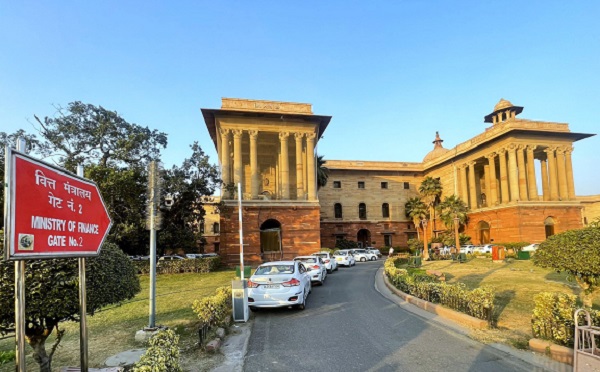.png)
Akshi Chawla is a Delhi-based independent writer and editorial consultant.
August 13, 2025 at 6:25 AM IST
India’s banking sector is undergoing a structural realignment in the very composition of its workforce. As of March 31, 2025, the 137 scheduled commercial banks operating in the country collectively employed over 1.9 million people, according to data from the Reserve Bank of India’s Annual Basic Statistical Return. This is an expansion of 445,000 since 2019, signalling a sector still in expansionary mode despite digitalisation and automation.
Yet the most striking transformation is not merely numerical growth but the redistribution of that workforce. In 2019, more than half of India’s bank employees (55.6%) were in the public sector, with private lenders employing less than a third. By 2024, that equation had reversed. This year, private banks have not just caught up with their state-owned counterparts, they have overtaken them. They currently employ 44.1% of all bank staff, eclipsing the public sector’s 39.4%.
In the six years, private sector banks added over 360,000 people to their rolls; public sector banks, meanwhile, had shed nearly 60,000. It is a quiet but decisive transfer of human resources — and, with it, influence. The symbolism is telling: India’s banking growth story is increasingly being written in the boardrooms of private lenders.
Beyond the duel between the public and private giants lies another narrative: the spectacular rise of small finance banks. Announced in the Union Budget of 2014-15, and licensed a year later, these banks were tasked with the unglamorous but critical role of deepening financial inclusion, with one in four branches mandated to be in rural areas.
In 2015, the RBI approved the setting up of ten such banks. Recently, AU Small Finance Bank received an in-principle approval to become a universal bank.
In 2019, they employed only 55,777 workers, a mere 3.8% of the banking workforce. Six years on, that number has more than tripled to 181,712, giving them a 9.6% share. This is the sharpest growth rate among all bank categories, underscoring both regulatory intent and market opportunity.
Urban Pull
If financial inclusion was the rallying cry, geography tells a more ambivalent story. In 2019, rural India accounted for 17.6% of the banking workforce. By 2025, that share slipped to 14.9%, even as metropolitan areas increased their dominance from 37.2% to 39.5%. Urban and semi-urban areas also gained, but it is metros — with their density of high-value transactions — that remain the magnets for hiring.
The irony is evident: even as bank branches multiply in smaller towns and rural districts, employment opportunities appear to be gravitating towards the cities.
The map of this shift has its own epicentre. Maharashtra alone accounts for over 17.5% of India’s banking workforce — more than 333,000 people — and has contributed nearly a quarter of all new jobs since 2019. Uttar Pradesh, Tamil Nadu, Karnataka, West Bengal, Gujarat and Maharashtra together house over half of the nation’s banking workforce.
Delhi has seen the highest growth rate between 2019 and 2025, expanding its bank staff at a compounded annual growth rate of 6.9%, narrowly ahead of Arunachal Pradesh at 6.8% and Maharashtra at 6.2%. On the other end of the spectrum, workforce in banks in Goa shrank at a negative CAGR of 1.2%, while Meghalaya and Himachal Pradesh recorded the lowest growth at 1.4% and 1.9%, respectively.
The Indian bank employee is increasingly likely to be an officer. In 2019, officers constituted 65% of the workforce; by 2025, they represented 75.8%. Clerical roles have contracted from 24.7% to 18.9%, while subordinate staff now account for just 5.3%.
The hierarchy is sharper in metropolitan banks, especially foreign and private sector ones, where officer-heavy structures reflect both service complexity and the emphasis on client-facing, high-margin roles. Public sector banks, by contrast, retain a relatively larger clerical base.
Gender Gap
Yet for all the headlines about women leading marquee institutions, the sector’s shop floor remains overwhelmingly male. Women make up just 25.7% of employees, up from 23.9% six years ago, a gain so modest it barely registers.
Representation varies sharply by location and bank type. Rural areas employ the fewest women (17.2%), while metropolitan banks employ the most (30.7%). Foreign banks top the inclusivity list; small finance banks lag behind.
Kerala, meanwhile, comes closest to gender parity, with women occupying 44.6% of banking posts, followed by Ladakh and Goa. At the other end, Bihar, Rajasthan, and Tripura have female participation stubbornly below 20%, a reminder that employment data can double as a social barometer.
The workforce data tells a tale of both expansion and exclusion. Growth is being driven by private and small finance banks, but much of it is metropolitan in character. Public sector banks, once the undisputed employers of choice, are in retreat. Officers are on the rise, clerks in decline. And women remain underrepresented despite marginal gains.
If banking is to be a true engine of opportunity, it must build balance — not just between public and private, or rural and urban, but between officer and clerk, male and female. Capital allocation is only half the story; the other half is how, and to whom, the sector allocates its jobs. Without that, India’s banking sector risks deepening the divides it has the power to bridge.



